| Showing all 14 reviews by utak | |
| Review of: Takumar 200mm F3.5 by utak on Tue October 30, 2018 | Rating: 10 | View more reviews | |

Views: 157130
Reviews: 30
|
The Takumar 200/3.5 is one of the most respected M42 lenses ever made. Itís highly rated by Pentaxians who own the lens, and has also been discovered by other camera groups. See for example, this from a Fuji fan: https://www.youtube.com/watch?v=gdv_NFWDSYA
I was keen to see what all the fuss was about, and used the lens every day for a month to try it out.
First of all, 200mm is not everyoneís favourite focal length for primes; too short for real tele-photos, too long for more intimate close ups. Zoom lenses are more useful. Being tied to a 200mm for a whole month looks like a tricky challenge.
However, this lens is constantly entertaining, and surprisingly versatile in terms of the range of potential compositions and different styles. I used it quite a lot as a surrogate fast fifty with narrow dof, but it works well at all focal lengths, for portraits and landscapes and beyond.
The lens produces sharp images with beautiful bokeh wide open, and is even sharper stopped down. The 18 blades, of course, help to produce gorgeously smooth bokeh/bokeh balls at all stops. Colour rendering and saturation is excellent, and the relatively simple 4 element design lets the light straight in!
After the initial shock of lugging round a heavy, long beast (see photo below), I got used to it, and appreciated how solidly the lens is built. I also got used to the 2.5 meters plus MFD Ė it didnít turn out to be as big a limitation as I thought it would be.
And some other comments on the lens:
- The preset mechanism is a joy to use. Some other preset lenses have fiddly little dials at the front. The Tak 200/3.5ís dials are huge in comparison and perfectly positioned.
- It needs a deep hood, to improve contrast, and on the K-1 there are signs of limited vignetting on occasions. But itís not really a problem.
- The focus mechanism feels good, but itís not an easy lens to try and track/focus on birds in flight, for instance Ė itís a big and slow manual focus effort.
- The colours are among the most accurate of all my M42 lenses Ė I didnít need to do much colour adjustment.
- Thereís a reason why the lens was designed with a tripod collar. A tripod is not absolutely essential for closer-ups, but it definitely makes a difference for infinity shots. The lens gets progressively sharper stopped down to around f11, as I found taking moon shots. At slower speeds, any camera/lens movement really distracts from the sharpness, especially on a sensor as sensitive as the K-1.
- The K-1 green button metering with this lens is erratic. With some other old lenses, the necessary +/- ev compensation is quite consistent. With this lens, the adjustments were less clear, so shot-by-shot manual trial and error metering is required.
- The rendering of the lens is very good IMO. However, I did notice during ppíing that the images showed signs of stress faster than some other old lenses, such as banding and extra noise. This reduced the amount of heavy handed ppíing I could do to the images. With my Helios 44-2, to take one example, I can really push underexposed images before problems become obvious. So you need to try to get the exposures right first time.
- I also own a Takumar 200/4, and although I havenít done head-to-head shots, I feel the 200/3.5 is in a different class Ė better images and better to use.
In conclusion, an excellent, best-in-class M42 lens. It's not cheap, and prices have been rising recently, but it's worth it for the build quality, IQ and those fabulous 18 blades. You may not use it a great deal Ė itís hardly an easy walk around lens Ė but when you do, I think youíll be impressed.
You can see my photos from the lens in this album: https://www.flickr.com/photos/95859572@N06/albums/72157696097654780 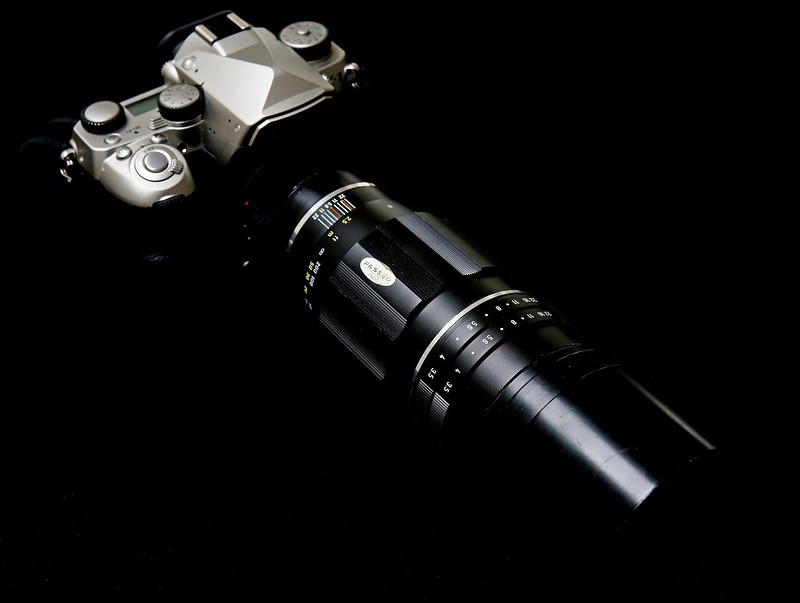  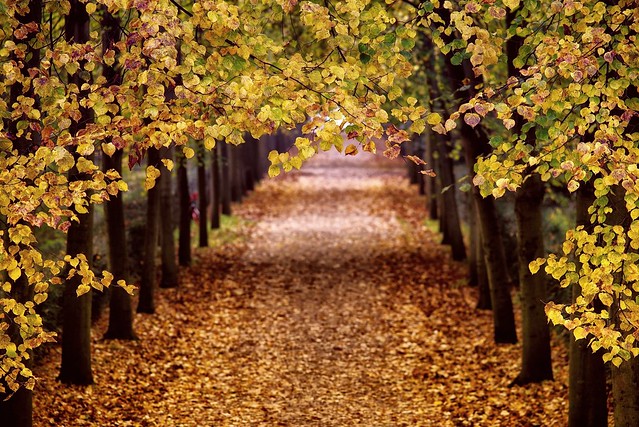  Ö.and some special bokeh effects, including a spirograph....
Ö.and some special bokeh effects, including a spirograph....
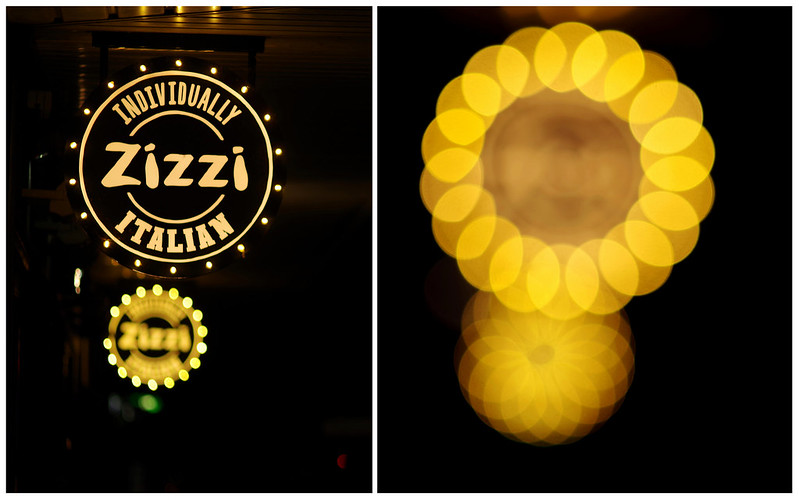 | |
| Review of: SMC Pentax-F 100mm F2.8 Macro by utak on Sun October 25, 2015 | Rating: 10 | View more reviews | |

Views: 108707
Reviews: 13
|
The F 100mm f2.8 Macro lies somewhere in the middle of a run of exceptional 100mm Macro lenses from the Super Multi-Coated Macro Takumar 100mm f4 to the latest D FA 100mm 2.8 Macro WR. They are all sharp lenses, with excellent reputations, so what, if anything, distinguishes the F-series version from the others?
Having read the reviews and seen the photos, I think one word (spelt in different ways) sums up the USP of this particular lens: Colour. It delivers vibrant and dynamic colours for the camera's sensor - something shared with other F-series lenses that have a very loyal following among users. And that's why I purchased one, after a long search. Plus the fact that a second hand F 100mm Macro is currently cheaper than a new D FA, and is a relatively rare lens that should hold its value.
Below is one of the first photos I took with the lens - the giant lily. From the start it was clear this really is a special lens in terms of colour rendering. It's good not just for macros, flying bugs and butterflies, but also landscapes and portraits. Someone wrote to ask me if the lens suffers from PF like their D FA 100mm. I've never tried the D FA, but my F 100mm is not too bad at PF. In bright, over exposed close ups, bees antenna can turn purple (for instance), and wide open and at longer distances the lens does some "fill ins" of bright pin-lights with modest purple. But nothing like my purple monsters - the K 135/2.5 or Tamron zoom macro.
The lens is super-sharp. However, I'd have to say that the lens is not as easy to use nor as convenient for ultra-close-ups as a 50 macro, and possibly does not have the epic close-up sharpness of my Macro Takumar 50/4 preset. The 100mm's dof at 2.8 is stupidly narrow, and it's not always appropriate to stop down to get better dof control - because the strong well defined background/colours can swamp the image.
The AF is useful, and easy and very fast when it locks onto the right object. But it's noisy and while the focus limiter is good for long distance, it is far less effective for macros. It takes time to get used to the ridiculously small focus ring.
The F 100mm is a big beast - heavy and bulky. Also, it's not weather sealed, and as a result, some F 100mm have fungus (something to watch out for) - from being used outside in damp conditions I guess.
One piece of advice: you should work out why and how you'll use the lens before buying it, and look at the alternatives, not just at 100mm. Having used both a 50mm Macro and 100mm Macro for a month each on a Single In challenge, the much smaller and lighter Takumar 50mm is the one that will travel with me more often on Macro shoots, and I personally prefer 50mm for very close up shots. The F 100mm will see more service as a specialist macro lens where extra reach is key; for portraits and visits to colourful gardens/events, as a walk-around lens...as long I remain strong enough to lug it around.
Overall, it's a superb piece of optical engineering.
Here's a link to my photos from the F 100 Macro on Flickr. https://www.flickr.com/photos/95859572@N06/albums/72157653929567868 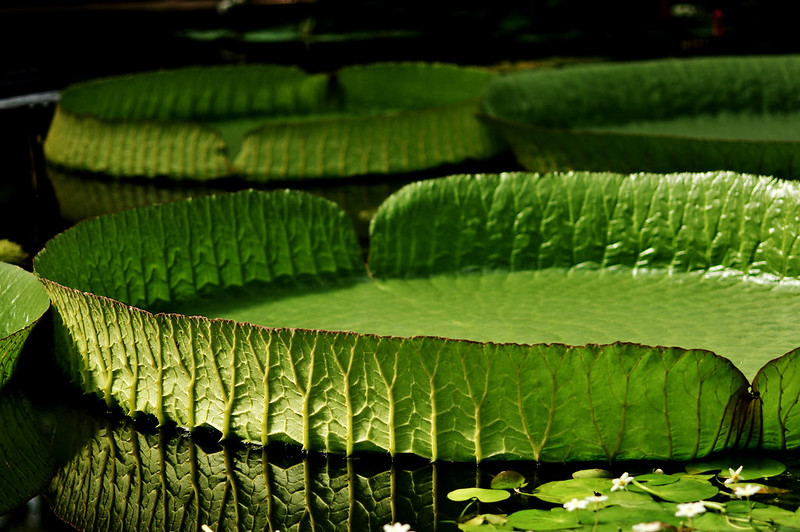   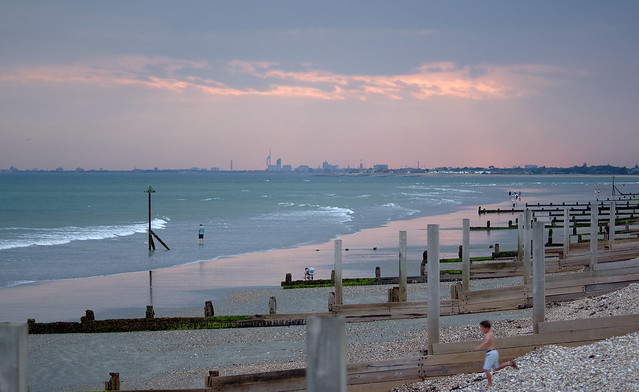 | |
| Review of: SMC Pentax 135mm F2.5 by utak on Mon April 6, 2015 | Rating: 10 | View more reviews | |

Views: 372861
Reviews: 71
|
This lens can produce amazing images wide-open and is very sharp closed down. It is capable of that sought-after 3-D rendering quality. It's good for street scenes, landscapes (some users speak very highly of it as a landscape lens), flowers, and especially for portraits. On FF it should be a fantastic portrait lens. The bokeh wide-open can be smooth and buttery like a fast fifty. I often prefer using the lens to my K85/1.8; it seems to open up more opportunities.
The lens is quite heavy, not prohibitively so, for walking around, but it means one has to have a steady hand to avoid blur. It needs a deep hood, and it exhibits narrow colour fringing when wider-open, occasionally in two different colours, along the same lines, in the same area of an image. You just have be aware of fringing conditions. It's sharp at 2.5, but the dof is so narrow, focusing correctly is critical. Fortunately, the glass is large and bright. It can be a frustrating lens; the on-board metering is not always spot-on (a common issue with K series lenses), and generally, the lens needs/rewards patience.
Before the K135/2.5, I owned the K135/3.5, and that is a good lens, especially stopped down. However, the K135/2.5 is very special. Believe the hype!!
Here is my Flickr album with more photos: https://www.flickr.com/photos/95859572@N06/sets/72157647525540667/ 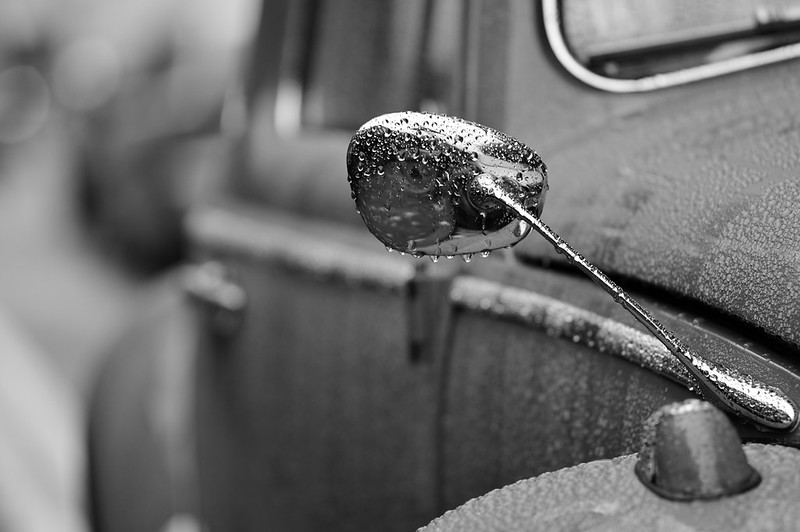 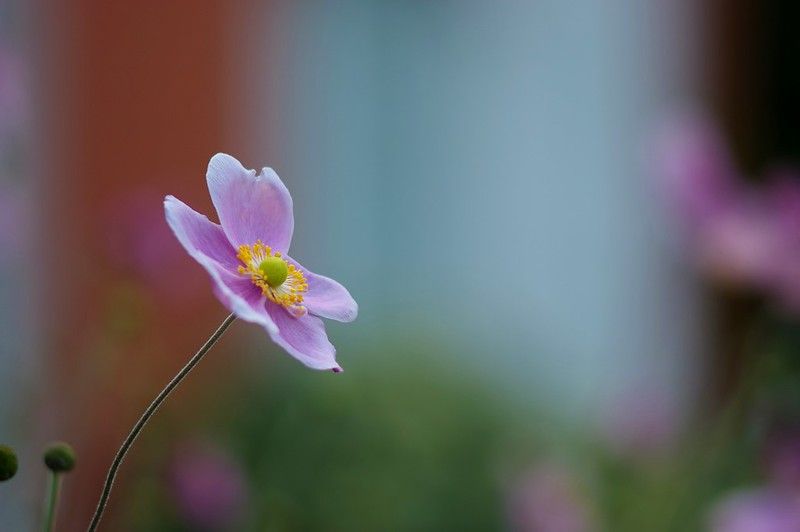 And this one, stopped down to attract starbursts!
And this one, stopped down to attract starbursts!
 | |
| Review of: Auto Takumar 35mm F2.3 by utak on Thu March 12, 2015 | Rating: 10 | View more reviews | |

Views: 118602
Reviews: 13
|
There are not so many reviews of the Auto-Takumar 35/2.3. But reading the reviews posted here and elsewhere, one suspects that some of the reviewers have rather fallen in love with their lens. I certainly have.
Physically, its large. Huge, even, compared to the diminutive Takumar 35/3.5. It's also fast. Very fast for its era (late 1950s) - still fast by today's standards. So combining that big chunk of glass to suck in light at the front, with a fast aperture, you'd expect something quite special in terms of wide-open images. And this lens does not disappoint! In fact, it excels.
Wide-open, it produces amazing images; dreamy, painterly colours, yet centre-sharp with fascinating bokeh. The images remind me slightly of the colourful, glowing and scrambled bokeh of the early Auto-Takumar 55's. However, this lens delivers more coherent background blur and highlights, with more swirly bokeh. More like the Zeiss/Helios bokeh. You can see it at its busiest, in the second photo below.
Stopped down, as others note, the images are accurate and sharp with good colours. Like all Auto-Takumar lenses, the original images may need processing to bring out the contrasts, colours etc., but the IQ is easily good enough for this. I particularly like the comment about it being a different lens at every stop - I've found this too.
It took me a while to find one at a reasonable (to me) price, and all I can say is that it has been well worth the wait. An unusual, special and highly recommended lens. Here's my Flickr album to date: https://www.flickr.com/photos/95859572@N06/sets/72157650476654070/ 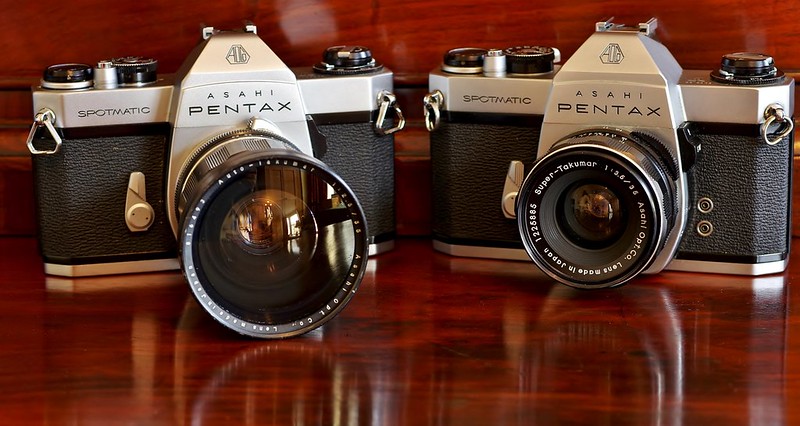   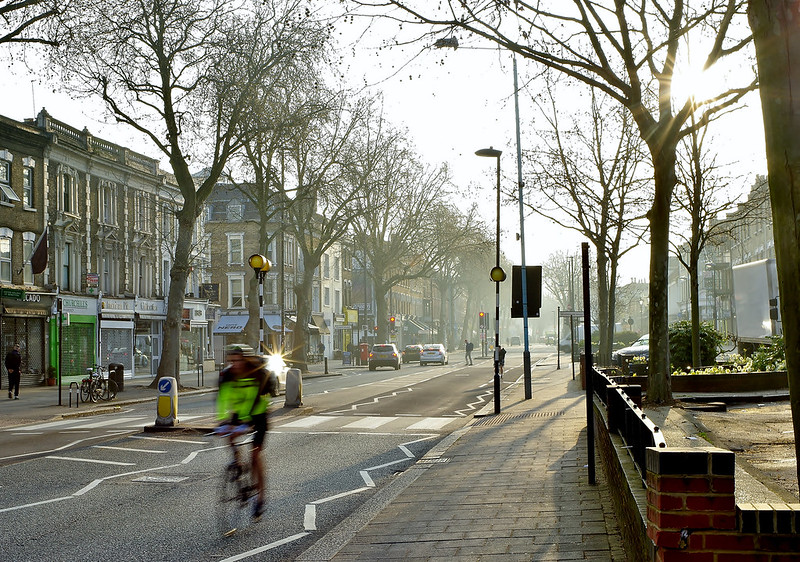 | |
| Review of: S-M-C/Super Takumar 200mm F4 by utak on Fri September 12, 2014 | Rating: 0 | View more reviews | |

Views: 282566
Reviews: 42
| The lens designers at Takumar must have had some love affair with the 200mm as they produced four M42 screwmount lenses; the f3.5 (preset), f5.6 (preset) and the f4 (two variants). My Super-Multi-Coated Takumar 200mm f4 is a serious piece of glass and metal. It's been in the family for 40 years. I know from looking at many film/Spotmatic photos that this lens is a really excellent performer, and the fantastically well engineered focus mechanism is a joy to use. We've got some wonderful family portraits and wildlife photos from it. The only two big drawbacks are its weight (as a walk around lens) and its 8 ft minimum focus distance. The lens performed OK on my K20D. However, on the K-3 it loses its magic, and I think this is more to do with the camera/sensor than the lens. While this isn't the place to get into a debate about cameras/sensors, I'd say the lens shows up issues with the K-3's larger sensor and metering, rather than the sensor showing up the lens's age/limitations. The K-3 doesn't meter the lens properly; the new SR doesn't do its job at this length; the focusing guide is that not helpful; and the clean colours I see on film are digitalised in a rather contrived way, including more pronounced purple/colour fringing than I recall on film, or earlier digital cameras (even with a good long hood). Reviewers rating Aberrations as 9 or 10 below are not using a K-3. The best way to use this lens with the K-3's larger sensor is to keep the lens securely stabilised, preferably with a tripod, and take over all the controls in manual. Overall, I do recommend this lens because it its cheap enough to buy and play with on crop sensor digital cameras as a 300mm equivalent (with crop) prime. I'd rate the 200/4 as a 9 on film cameras - so try it with a film camera to see just how good it is. | |
| Review of: S-M-C/Super Macro-Takumar 50mm F4 by utak on Fri July 11, 2014 | Rating: 10 | View more reviews | |

Views: 232791
Reviews: 37
| The Macro Takumar 50/4 celebrates its 50th birthday this year. Recently, I used the early 1:1 preset version every day for a month on the Single in Challenge, and all I can say is Ďwowí. What a great lens Takumar made back in 1964. Physically the lens is a small gem, and itís a joy to use. The end results are beautiful, even by the standards of todayís macros. Itís not the easiest lens to master, and thatís part of the fun. First of all, f4 is a bit slow for some kinds of macro work with only natural light. With live view/zoom itís really not a problem seeing/focusing. But Iíd have liked a faster lens to combat very slight movements in small objects. Secondly, my K-3 and K-01 simply canít meter the very deep-set glass accurately for up-close shots outside, and tends to over exposure across the frame, resulting in blow-outs. However, that's not a con worth dwelling on for me, as macro is much better manually metered. After some trial and error on subjects and settings, youíll find the lens produces stunning images. Very sharp and very colourful. At f4 the 50mm it can deliver very artistic images with surprisingly narrow DoF and super-smooth bokeh (see photo below). 10 for bokeh wide open, but closed down the blades become much more noticeable in the background and maybe not to everyone's taste. The quality of build and engineering is outstanding. Having said this, there is one downside to the preset version, given its age. It has more moving parts, and is undoubtedly more fragile than later, and to me less desirable, S-M-C Takumars (not 1:1). So you have to be careful buying one unseen off the web.
I highly recommend the lens to anyone who wants a cheapish entry into macro photography, and a piece of history. It cost me around US$100. Itís worth every cent IMO. Itís one of those lenses youíll want to return to again and again. It is also a more than adequate walk around lens. Not quite in the same league as the Takumar 50/1.4, but close enough. Here are a few photos of and by the lens, and if you're interested, a link to my Mac Tak 50/4 photos on Flickr. www.flickr.com/photos/95859572@N06/sets/72157644855700903/ 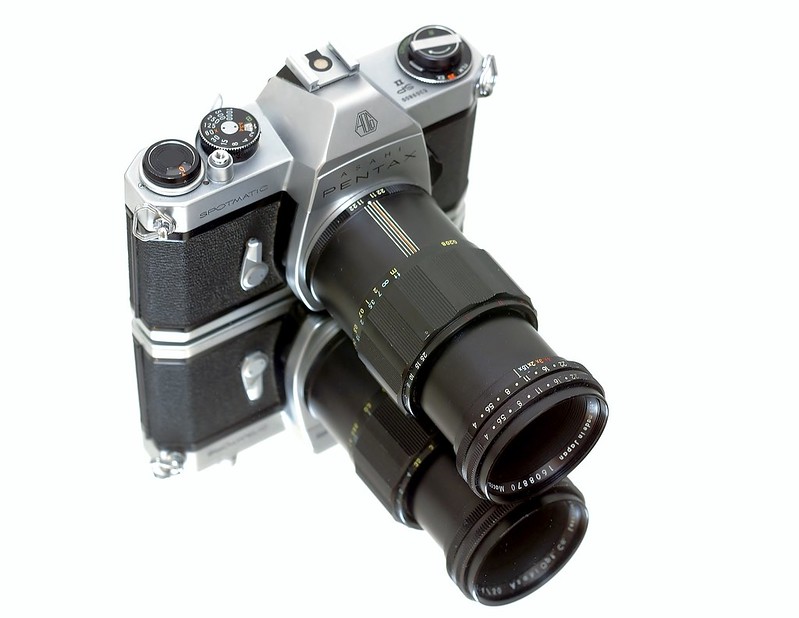   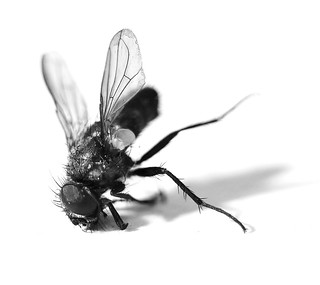 | |
| Review of: Auto-Takumar 55mm F2.2 by utak on Fri October 11, 2013 | Rating: 9 | View more reviews | |

Views: 64927
Reviews: 10
| This early 1960s lens is surprisingly diminutive, like the famously petite Takumar 35mm f3.5. There are two versions of the f2.2: one with a black aperture ring (like mine) and one with a silver ring. The lens has a 10-bladed design that is different from the later 6-bladed Takumar 55mmís, as well as a diaphragm charging lever and a front aperture ring. The aperture settings go up to f22 rather than f16. The aperture and focus rings do not turn as effortlessly as the later Takumars Ė apparently this was a later innovation. There is a faster f2 version with the same design, which I also have. The f2 was assessed as one of the sharpest edge to edge 50/55/58mm lenses of its era. The f2.2 lens seems to me to be equally sharp, even wide open, and it is still an excellent match for powerful modern digital cameras. [SIZE=2]In theory 10 blades should produce smoother bokeh than the 6-bladed Takumars. But given the lensís optical design the bokeh can be unusually swirly, like a Biotar/Helios lens but with slightly smoother out of focus transitions. With the right lighting, images have a special glow that is very appealing with more muted contrast and colors. This makes the lens great for portraits and artistic shots. Purple fringing is not really an issue, but as with many lenses without super/multi-coatings, it can flare and ghost on occasion. However, it does this beautifully too! A real gem if you can find one. [/SIZE]
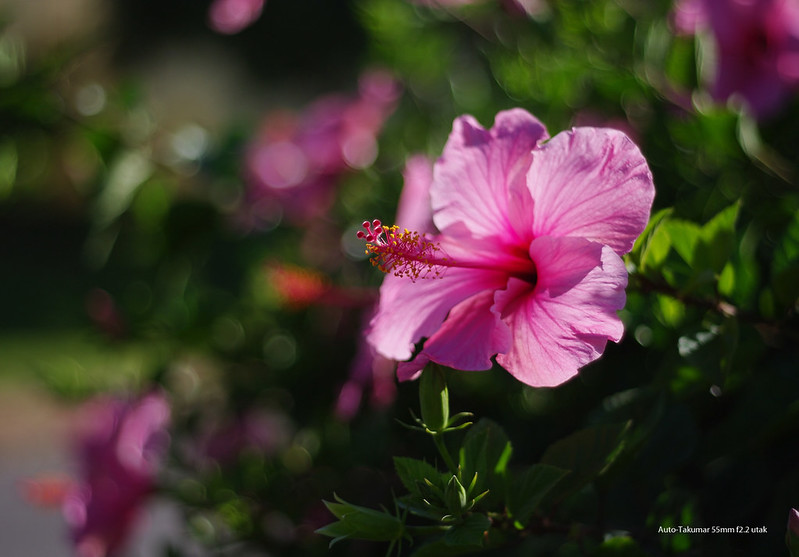 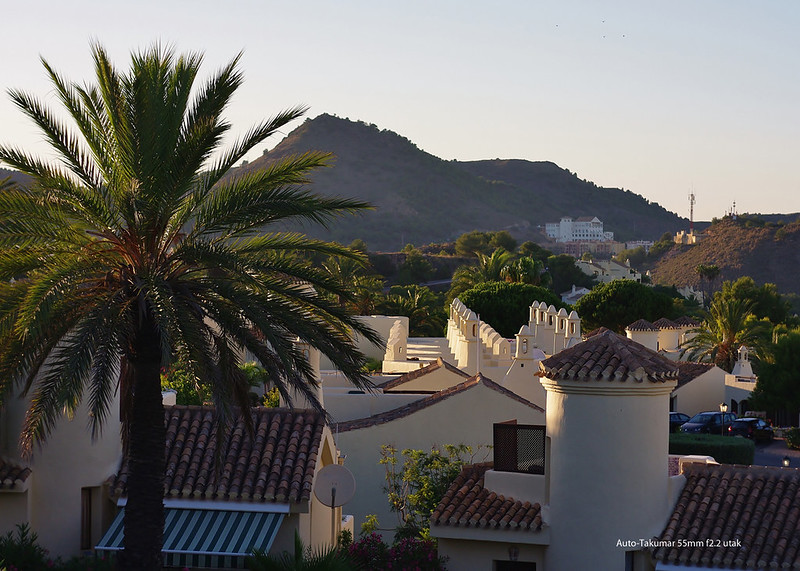 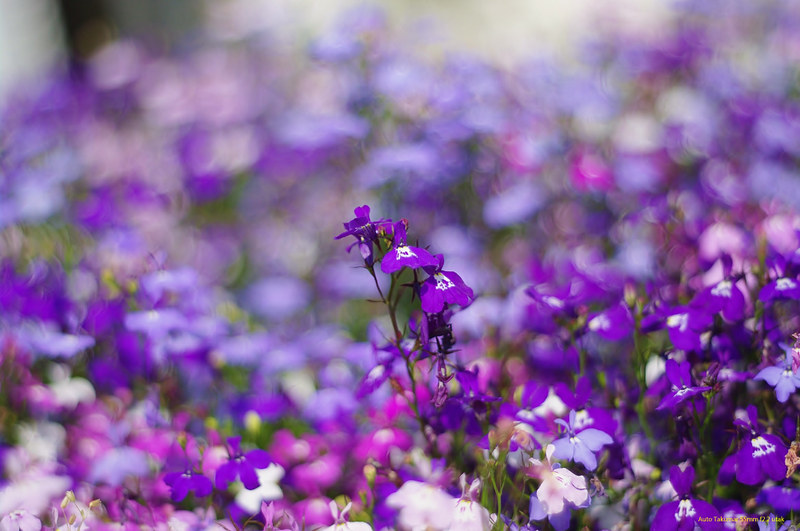 The f2.2 on the left and the f2 on the right The f2.2 on the left and the f2 on the right 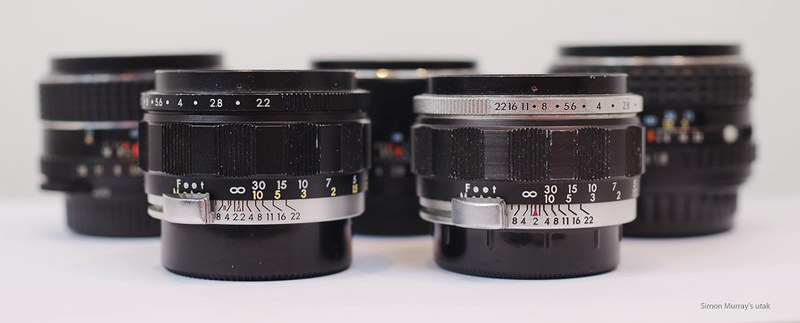 | |
| Review of: Super-Takumar/Auto-Takumar/Takumar 135mm F3.5 by utak on Sun June 23, 2013 | Rating: 9 | View more reviews | |

Views: 84686
Reviews: 12
| Mine is the all black version. Itís a very cute lens, and surprisingly small and light compared to later SMC Takumar 135s. With preset controls itís a joy to use if you enjoy manual lenses. It's sharp enough for the vast majority of purposes - portraits, still life, street scenes etc. A good deep hood is not essential but helps to avoid flare and overly-light images; the original hood is shown in the photo below. I havenít noticed the lens being particularly prone to CA or purple fringing. One notable reason to buy these pre super-multi-coated lenses is their color rendition. Thereís something special and different about images from early Takumar lenses up to and including early versions of the Super Takumars. A kind of cool glow that does not detract too much from sharpness; quite distinct from modern digital lenses. Just don't expect this lens to perform like a 100mm Macro!! None of the Takumar 135mm 3.5s are expensive, and this version seems to suffer somewhat in IQ comparisons on-line to later SMC Takumar versions (not to mention the 135 2.5s or K/M series), which can make it even more cost effective to buy. Itís a 9 to me because itís so beautifully engineered and such great value. The bottom line is that if you put the effort into composing, focusing and metering etc., this lens will produce excellent images. And you really have to hold one to realise just how cute it is...  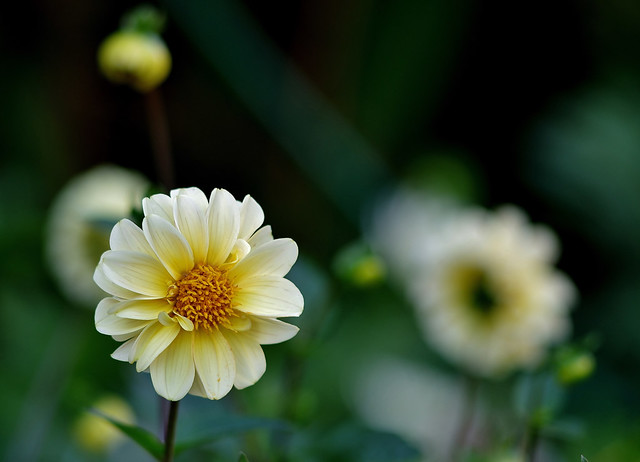 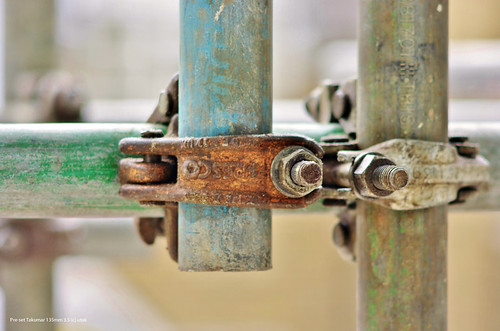  | |
| Review of: S-M-C/Super Takumar 24mm F3.5 by utak on Tue April 30, 2013 | Rating: 8 | View more reviews | |

Views: 162067
Reviews: 15
|
For its physical appearance, build, handling and uber-cool original hood, this is a 10/10 lens. A very handsome, solid lens. Some people describe M series lenses (for example) as solid, but this is in an entirely different class.
For its optical performance on film, a 10. It was after all designed for film. I'm not sure it's pixel-peeping sharp but it never seems to matter so much on film prints. More importantly, it produces simply stunning wide angle images, with beautiful colors/contrast, especially on sunny days - it's not really an indoor-friendly lens on film. Not just color; it is also an exceptional lens for B&W photos.
For its performance on an aps-c digital sensor, I'd rate it not more than a 7. OK but not great. Its one of those excellent film era lenses that does not totally suit being 'cropped', in my experience. I find myself using DA zoom lenses around that focal length, or wider, a lot more.
To perform to the very best of its abilities it really needs that wider angle view. One day I'll try it on a FF digital (as a screwmount, it doesn't have to be Pentax), and see how it copes with a powerful sensor.
Here's the lens and hood married to a K-01. (I inherited the lens so no price info.).
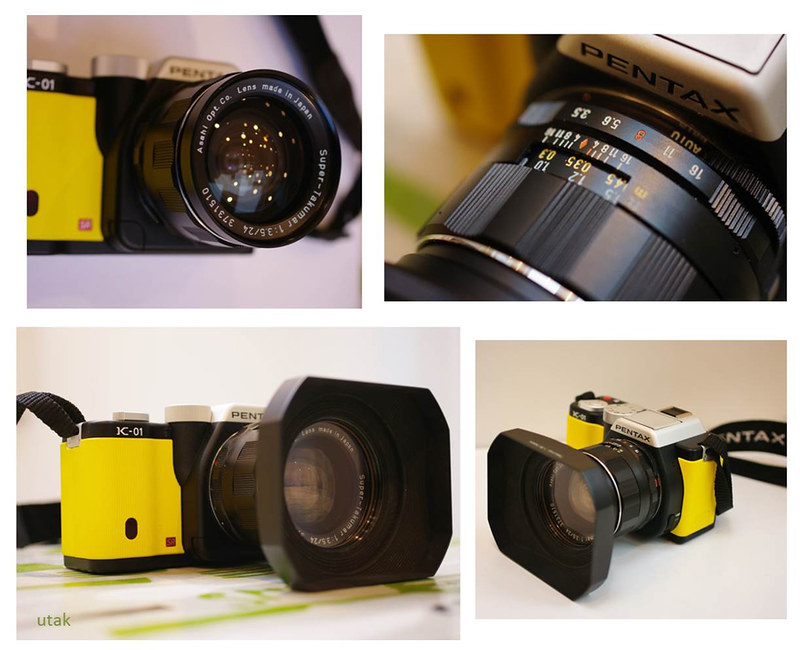 And here's a K20D photo of Ham House - the lens handled dark branches and light sky quite well IMO.
And here's a K20D photo of Ham House - the lens handled dark branches and light sky quite well IMO.
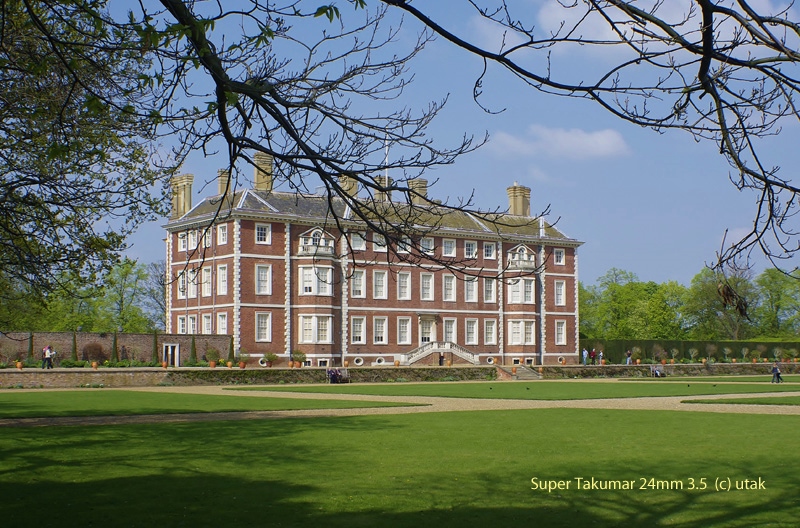 | |
| Review of: SMC Pentax-DA 10-17mm F3.5-4.5 Fish-Eye ED [IF] by utak on Mon April 22, 2013 | Rating: 8 | View more reviews | |

Views: 306314
Reviews: 101
|
It's no secret that this is almost a "buy one get one free lens", and I agree with other reviewers: you get the fisheye lens at 10mm but you also get a quality wide angle lens at 17mm.
Fisheye effects can be done on software these days, so you may decide a wide angle prime is better for you.
However, software is only as good as the image it works on, and for me the 10mm end of this lens captures a lot of image that other lenses miss. Especially in scenes where all the action is spread out, and a fisheye photo looks better than stitching. Or conversely, in narrowly confined streets and other built up areas/indoors.
The image quality is very good and the colors are vibrant particularly towards the 17mm end, where the fisheye distortion is less...but still noticeable. It continues to amaze me that you can point the lens nearly straight at the sun and it still delivers. The short focus distance is also excellent for fisheye macro-style images, and the resolution is very good, especially if you use a tripod.
The big downsides to me are: (1) it exhibits quite lot of purple fringing, not just wide open and not just on very sunny days, and (2) my lens seems to struggle with high contrast clouds, and the borders between (say) trees and the sky: not just PF but blown out areas. Combined, these downsides are a shame, as the fisheye should be at its best taking photos of landscapes etc. on bright/sunny days. Hence, I'm rating it an 8.
This lens often comes with us on trips and holidays, while most primes get left behind. For some situations it's not used at all, but sometimes (e.g. in towns and cities outdoors and indoors) it's the only lens we use, including family snapshots. The results are often admired by others, and photography is a results business after all!!
The Leaning Tower of London at 10mm:
 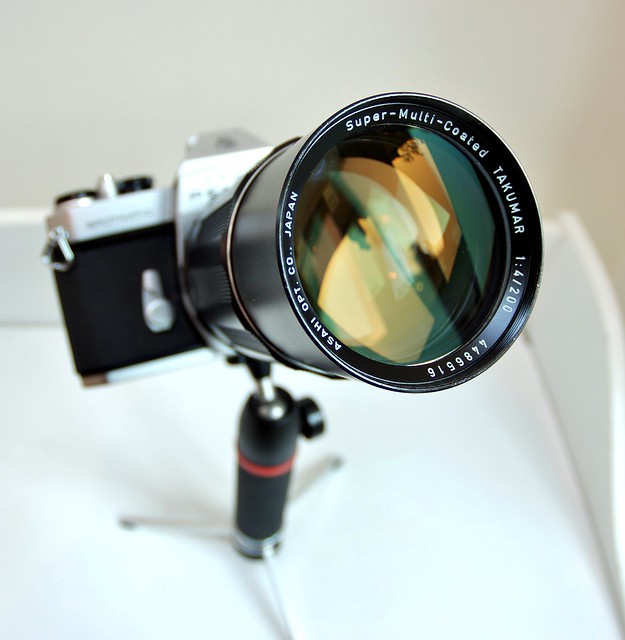  | |
| Review of: SMC Pentax-M 28mm F2.8 by utak on Sun April 21, 2013 | Rating: 6 | View more reviews | |

Views: 498772
Reviews: 93
|
The M28 2.8, as reviews point out below, is a compact, solid lens that sits neatly on modern digital cameras. 28mm is a good walk-around focal length for asp-c cameras, and the M28 is a logical travelling companion for the excellent M50mm 1.7.
I have the less well regarded Version 1. I'm rating it a 6, as the ratings guide suggest 5 to 6 is "good" and that's what this lens is if you pay under $50.
My reason for posting this review is to recommend that if you want an excellent used 28mm at a more reasonable price than later 28mm's (and Pentax currently don't sell new 28mm's), you should first try a M28mm 3.5 or better still a K28 3.5. Or non-Pentax options. Like many others, I read lots of user reviews and tests before buying new or used lenses. I wasn't convinced that enough owners or testers liked the M28mm enough....but was seduced by a slightly more expensive mint, boxed lens, and the strength of the M50 1.7. It was a mistake.
Having used the M28mm for six months, and found it sharp at short distances, but disappointing rendition-wise at longer distances, I decided to purchase a K28 3.5. The difference in resolution is significant - to a "pro-level" with the K28. Well worth the additional cost, plus the extra speed of the M28 2.8 is less vital on today's digital cameras.
To illustrate my issue with the M28, take the photo below. The image after photo-shopping may look OK here, but it just doesn't have a high enough resolution for larger print-outs at 12+ inches. It needed a major boost to overcome muted colors (despite an amazingly vivid live scene infront of me). This is basic photography in a digital era - crop and shop and occassionally blow up for the wall (or to sell) - something that my M28 2.8 Version 1 does not handle well, especially compared to the K28 3.5.
 | |
| Review of: SMC/S-M-C/Super-/Auto-/Takumar 55mm F1.8 by utak on Tue April 16, 2013 | Rating: 10 | View more reviews | |

Views: 598504
Reviews: 88
|
Before seeing any on-line reviews/prices of the Super-Multi-Coated Takumar 55mm f1.8 I inherited, I thought it was my best lens, by some margin. A more attractive focal length for me than my Takumar/FA 50mm f1.4s. Easily fast enough for taking indoor (daylight) pictures without flash. And light-years better images than my Pentax and Canon zooms/point and shoots.
Then I read more on-line about the "legendary" Pentax lenses, and started collecting other old and new primes, some well over ten times as expensive as this one. But quite frankly I still think this lens, or more accurately my "new" SMC Takumar version, is my best lens considering its performance, size and cost.
Its good to read all the very positive reviews of Pentax's great 55mm lens legacy here and elsewhere. There's little I can add except to share my experiences of the 55mm versions I own. I find the SMC Takumar produces slightly higher resolution images than the S-M-C (starting from a very high level!) and Super Takumar. The K-series/k mount lens is larger and heavier than the Takumars, and doesn't quite have the wonderful jewel-like feel of the Takumars.
The perfect lens for experienced and budding photographers alike to develop their manual skills - and outrageous value for money. Rather than continue with a thesaurus of superlatives, I'd like to submit these two SMC + K20D images, one being a crop of the other - to show just how cleanly this lens can resolve images/lines/in and out of focus areas.
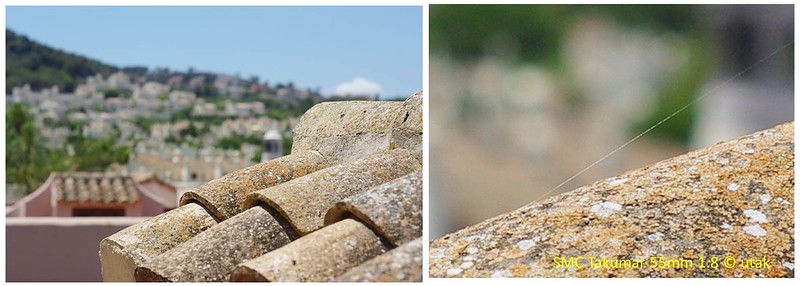 Plus two others, using a K-3:
Plus two others, using a K-3:
 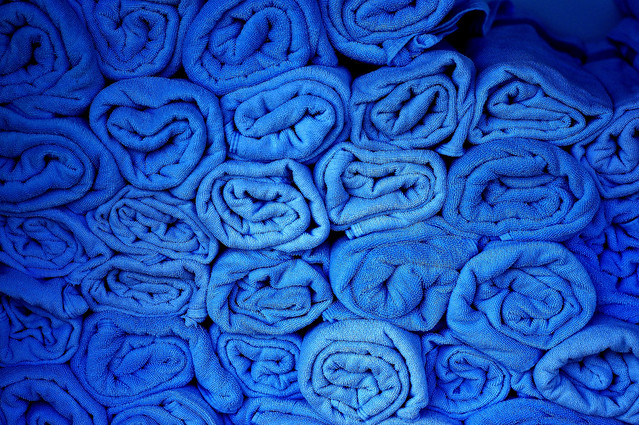 | |
| Review of: SMC Pentax 28mm F3.5 by utak on Sat April 13, 2013 | Rating: 10 | View more reviews | |

Views: 294816
Reviews: 64
| After many years of trying to find the perfect ďwalk-aroundĒ prime lens, I purchased and fell in love with the K28 f3.5. Itís a lens Iíd rate ahead of my other 24mm to 40mm lenses, partly because of the focal length, but mostly because of performance. The K28mm is bigger than some lenses at these focal lengths, but itís not overly large or heavy, and itís got a satisfyingly solid feel from a golden Pentax era. The K28mm is sharp at all stops and distances, but its great strength is that it reproduces vivid and distinctive colors. One way to describe its performance is to look at post-production processing versus the M28f2.8 (to take a popular alternative). If you under or over expose images with the K28mm, you can often adjust the image quite a lot without losing resolution. Too many images from my M28mm seem to quickly ďfall apartĒ into fuzziness during heavy post production. I actually use it for product shots as well as wider/infinity shots; although one needs to be careful of the bokeh which is not as subtle as some 50mmís. This 2012 digital holiday snap I hope demonstrates the ďfilmy/technicolorĒ feel the lens can produce, described in other reviews. On the original file, itís extremely impressive how far one can zoom in on the calamari while retaining sharpness - if pixel peeping (or calamari) is your thing. For landscape shots I trust it more than my 35mm limited. [SIZE=2]Another thumbs up for a great and highly recommended lens. [/SIZE]
 | |
| Review of: SMC Pentax 85mm F1.8 by utak on Thu April 11, 2013 | Rating: 10 | View more reviews | |

Views: 167852
Reviews: 23
| The K85mm f1.8 is a beautifully engineered film-era portrait lens. It was very highly rated in the film and early digital days. It produces sharp images, excellent color rendition and smooth bokeh, and doesnít suffer from the kind of purple fringing produced by the FA77mm. Today, however, itís not so universally admired/valued, perhaps because of the quality of new competitors. And from f5.6 onwards, of course, it can be hard to tell the difference on aps-c cameras between this lens and a new budget zoom at 85mm. So if you want one of these rare and relatively expensive MF lenses, be sure to have a good reason for taking photos at or around f1.8, and be prepared to work hard on metering, focusing, composition etc. for the best results, which are stunning Ė itís not the most forgiving lens. The lens is not unreasonably soft wide open; instead it produces slightly creamy skin tones. As others have written, this effect can be extremely attractive for portraits, and adds to that artistic 3D effect. If youíre on a tight budget and looking for a great value MF Pentax lens for portraits on cropped sensors, you may want to look at the K 55mm f1.8. If money is no object, the Pentax starred 85mm 1.4s are probably a better option. Nevertheless, the K85mm is an exceptional lens and a 10/10 for its type; Iíd rate the M85mm, which Iíve also used, a 9/10. Itís a worthy, lower cost MF alternative to the FA77mm and it is much more portable than newer 85mm 1.4s. It would probably have a more legendary status (like its Takumar M42 predecessor) with more top reviews, if it wasnít so rare, or used on a FF camera to show off the advantages of its focal length, extremely narrow/artistic DOF possibilities and optical qualities, especially where other lenses' purple fringing problems can become more pronounced. Edit: I couldn't find a lot of photos to judge this lens's capabilities when I was thinking about buying one, so for others here are two @f1.8 and a few others: 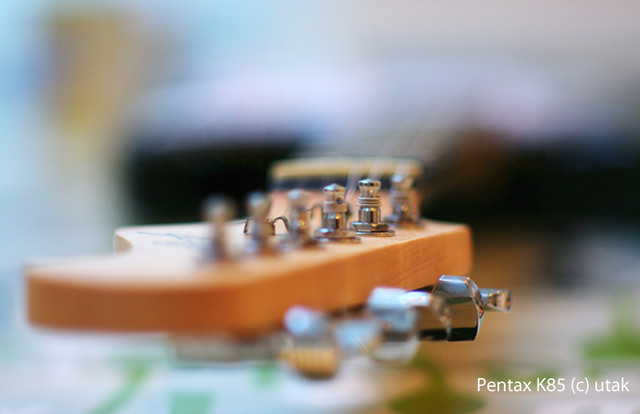 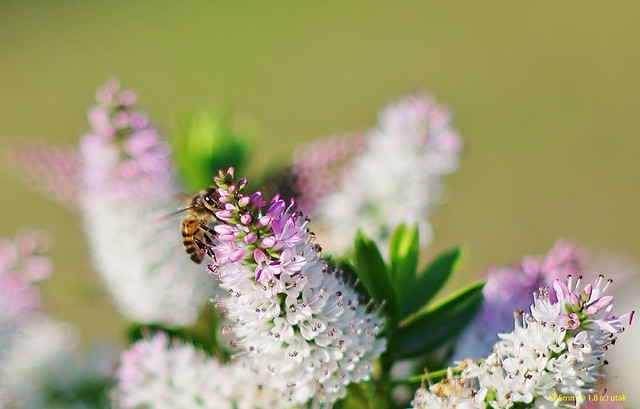   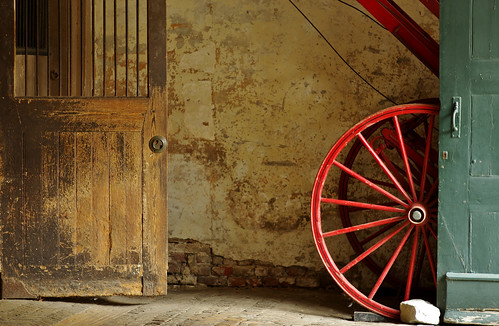 | |